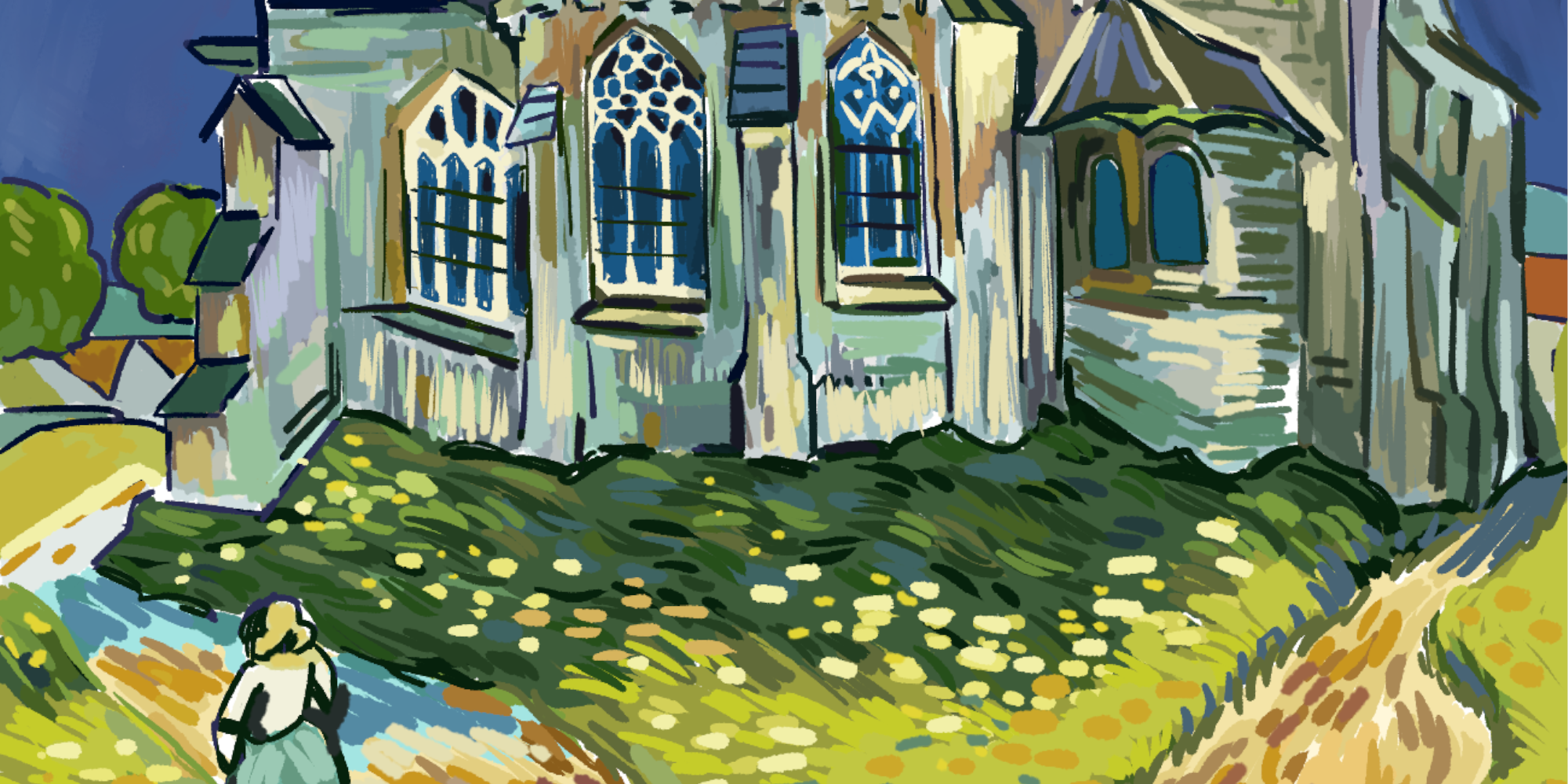From RGB to ROYGBIV
by River L Starliper | published Oct. 17th, 2023
Home to a variety of unique degree programs, RIT is the only school in the country that offers a graduate program in Color Science. Students in the program study human perception of color, topics related to illumination, imaging science and more.
Students can also supplement their studies through the Munsell Color Science Laboratory, which is working to expand quality imaging to museums and historic institutions.
Beyond RGB
Leah Humenuck, a graduate student in the Color Science program, described the basics of the lab's Beyond RGB project.
“This is a software system and setup that utilizes regular RGB cameras to capture color-accurate digital master files — digital reproductions of art pieces,” said Humenuck.
Instead of investing thousands into spectral cameras for color-accurate imaging, institutions can instead use regular, consumer-grade RGB cameras and still achieve a high degree of accuracy.
But for what institutions is this technology designed and why? Dr. Susan Farnand, an associate professor in the Color Science program, offered insight.
“We are imaging cultural heritage items in order to preserve our cultural heritage — preserve and share,” said Farnand.
These intentions place Beyond RGB within the scope of museums and other heritage preservation institutions. Such places are typically not-for-profit and funded by the public and/or grants, making cost accessibility paramount.
“The big thing about Beyond [RGB] is that it’s intended as a low-barrier-to-entry system, one that has less cost in terms of actual financial cost as well as costs in terms of the personnel needed to run it,” explained Farnand.
As digital preservation of cultural heritage gains more traction, the appeal of Beyond RGB to the museum field goes further than cost. Institutions must balance accuracy with practicality to avoid capturing incorrect or incomplete records.
“This is important for museums because ... when you capture [different types of objects] underneath different lighting, sometimes there will need to be post-processing done," Humenuck stated. "The camera can only estimate to an extent what the eye actually sees.”
“The big thing about Beyond [RGB] is that it’s intended as a low-barrier-to-entry system."
Post-processing is the method of loading raw photos into software for alterations and analysis. This process can create more accurate images from non-spectral cameras, but it can also create bias based on personal analyses.
“When there’s post-processing done, that’s subjective to the person doing the post-processing,” Humenuck explained.
Just as different cameras capture varying images, everyone sees the world slightly differently, which makes post-processing inaccurate if someone is not careful.
Beyond Influences
Last summer, the Beyond RGB team traveled to institutions across the region to test their work and receive constructive feedback from museums.
From local figures such as RIT’s Cary Graphic Arts Collection to the Museum of Modern Art (MoMA) in New York City, Beyond RGB was implemented to portray a variety of objects and mediums in different conditions.
This team included Olivia Kuzio, an RIT alumna involved with the project.
“Olivia would provide an overview of the system, what it is and how it works," said Farnand. "We went from there to a hands-on session where we actually captured different items within that institution’s collection.”
The imaged items included cloth samples, drawings, photographs and oil paintings, such as a Picasso piece from a MoMA collection.
For now, museums and historical societies use equipment from the Beyond RGB project. But, in the future, museums will be able to install their own setups and equipment to utilize the project unassisted.
“The one thing that’s required of museums is the lighting, and one of the things that we’re working on in the coming year is coming up with a lighting system [that is] lower cost than the programmable LED lights that are out there right now,” said Farnand.
While the cameras used are common, consumer-grade and widely available, the lights are more difficult to manage. Since the project involves aligning images with color reference charts under different lighting, the correct type of lighting must be used to ensure accuracy.
“One of the big things that [museums] always talk about is cost, and the lights that we were using were ... around eight thousand apiece,” described Humenuck.
Because the setup requires multiple lights, these costs quickly add up — and for small museums, high costs create a barrier to the project entirely.
“The idea would be to develop a lighting system for something under ten thousand dollars,” explained Farnand, hinting at the future goals of the team’s research.
Beyond This Year
While the setup and software have been fine-tuned, there is still work to be done. As previously mentioned, lighting costs are currently too high for the project’s ultimate goal of facilitating accessibility.
“Olivia has done the work to see what’s actually needed in a light, she’s done that research," Humenuck said. "Now that we know that, we are looking into ways to create just specifically what is needed in order to do this research and create it into a workflow for a museum."
In addition to locating alternative sources of lighting, research continues on potential applications of the project and ways to cut costs even further. Although the cameras used so far have been consumer-grade, high-quality cameras can cost well over a thousand dollars. Smartphone cameras, on the other hand, are much more common.
“I’m interested in seeing ... mobile phone cameras, how they respond under these conditions as well as the use of mobile phone cameras for documentation within cultural heritage,” Humenuck said.
Though small, the future is open wide for RIT’s Color Science program.
"We have students from all different backgrounds and knowledge areas, and they come together and pursue great projects like this one.”
“Color Science is a great place to be," noted Humenuck. "Especially since we have students from all different backgrounds and knowledge areas, and they come together and pursue great projects like this one.”



